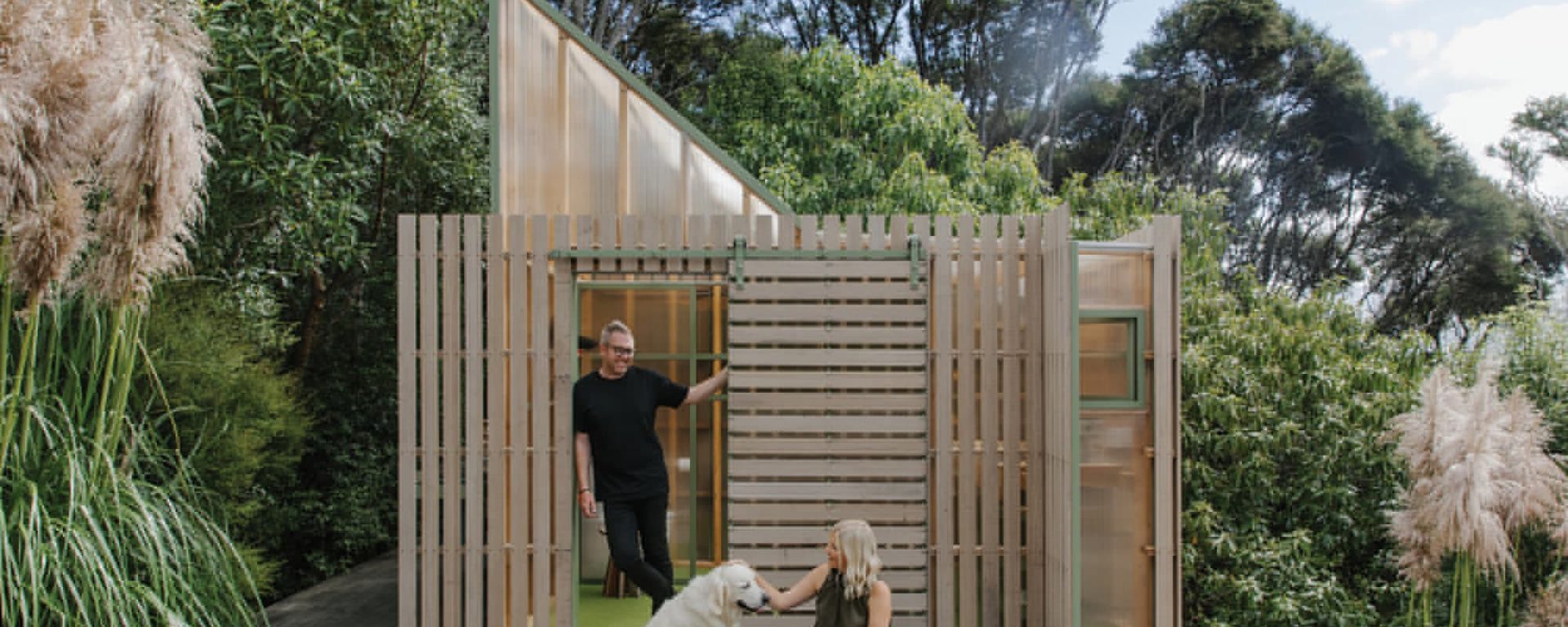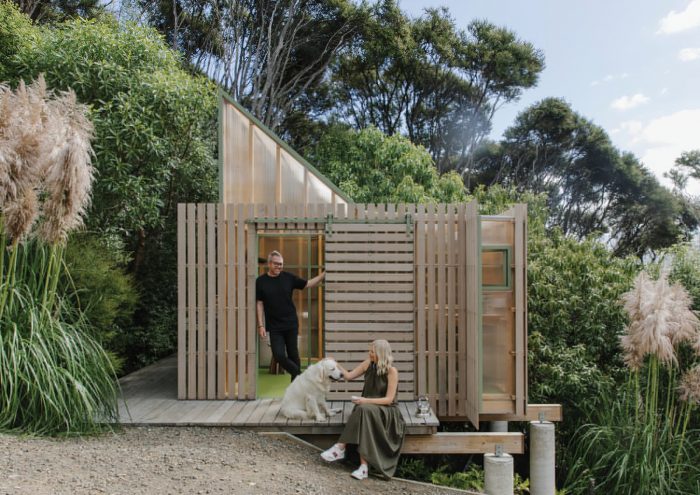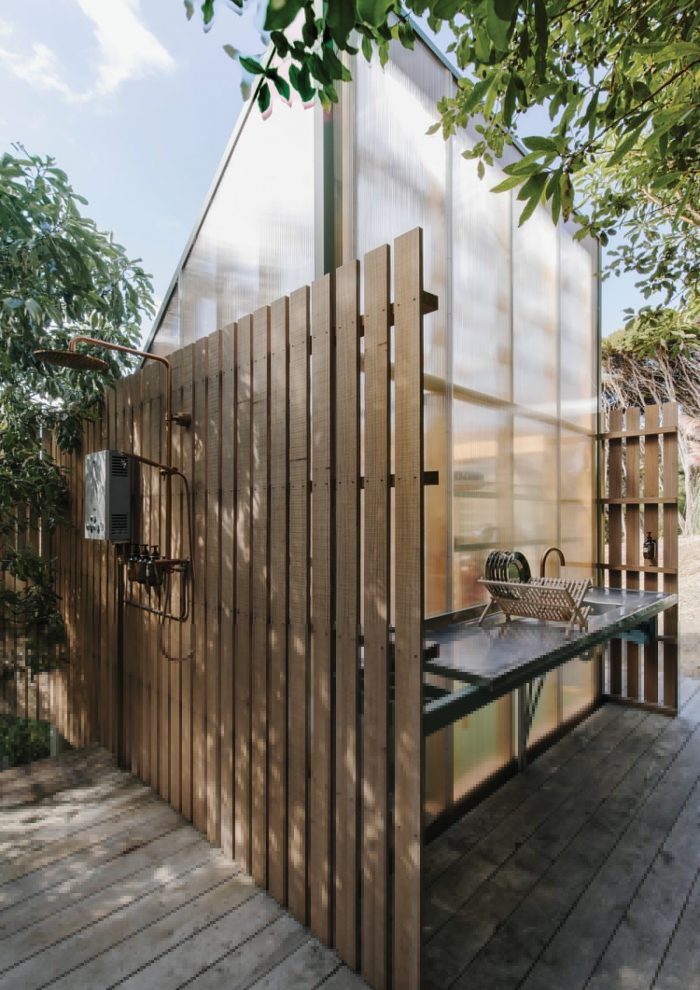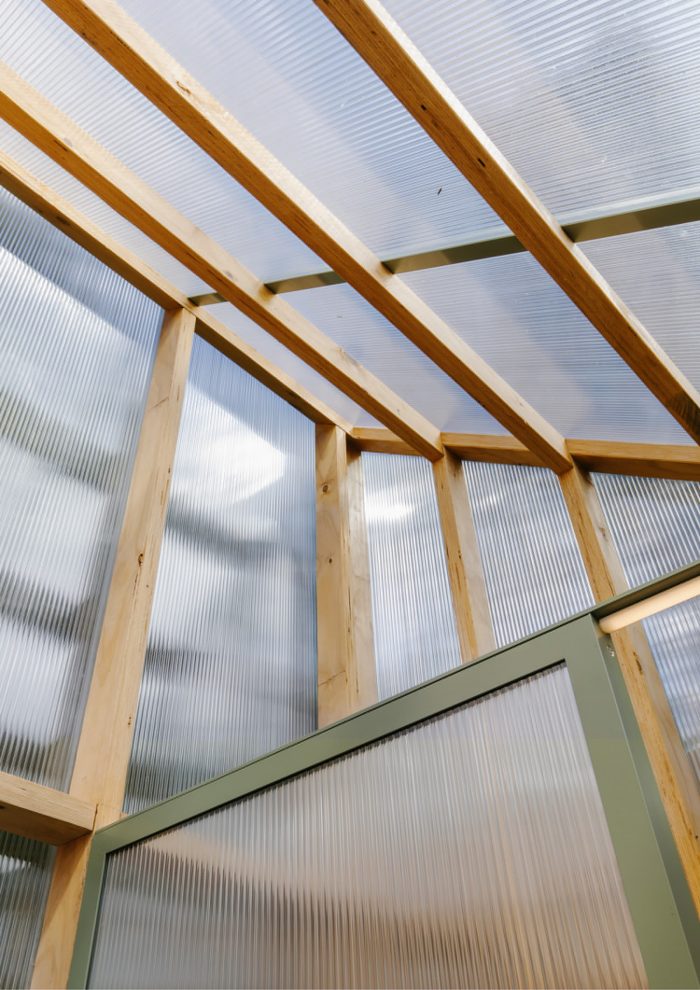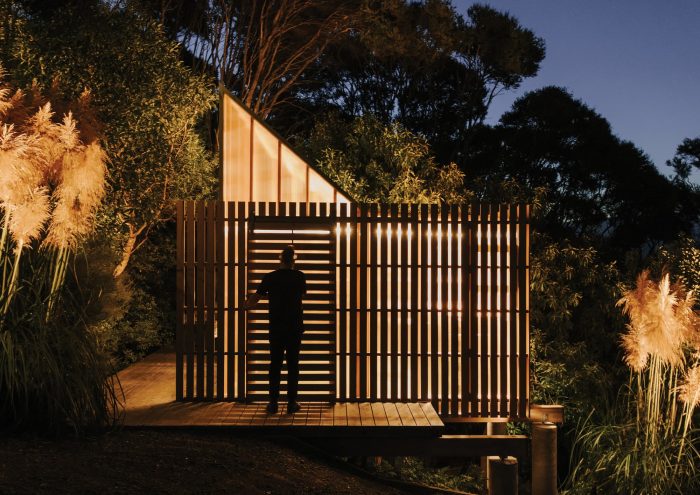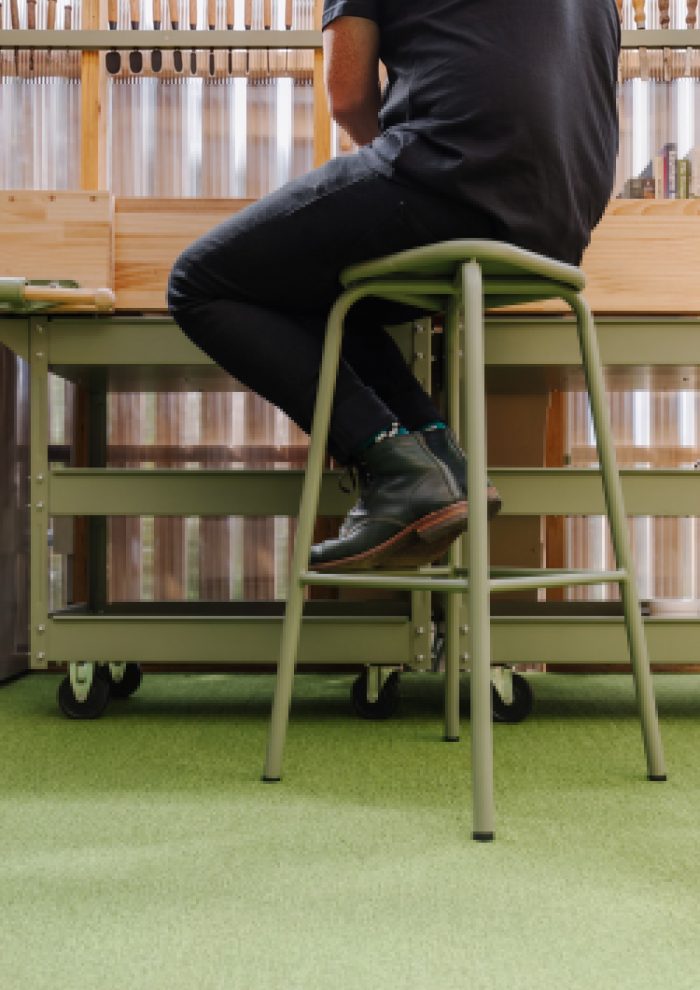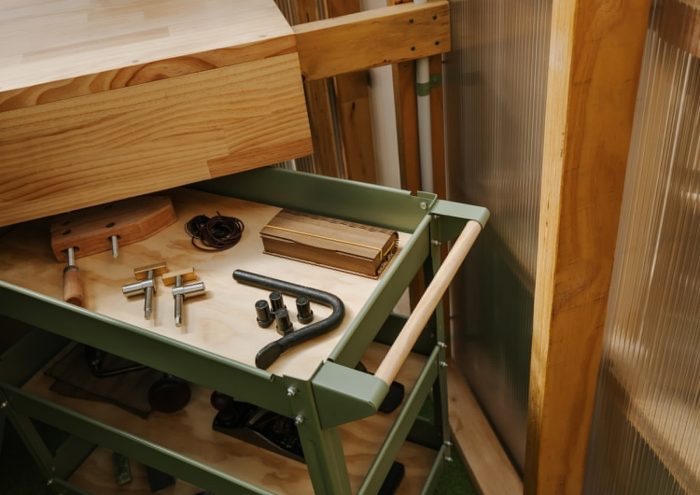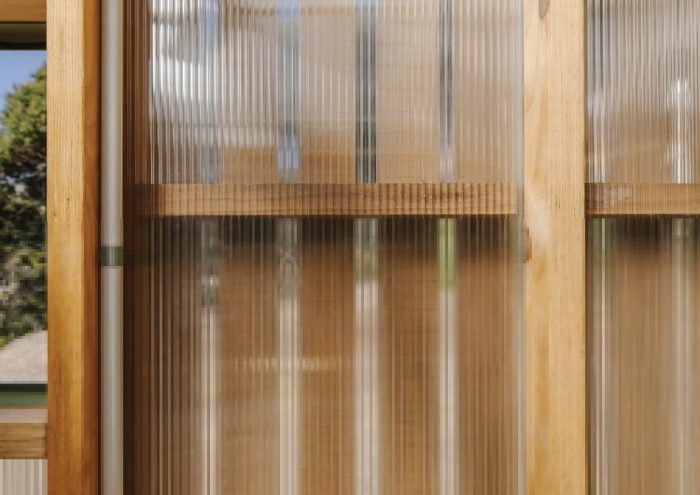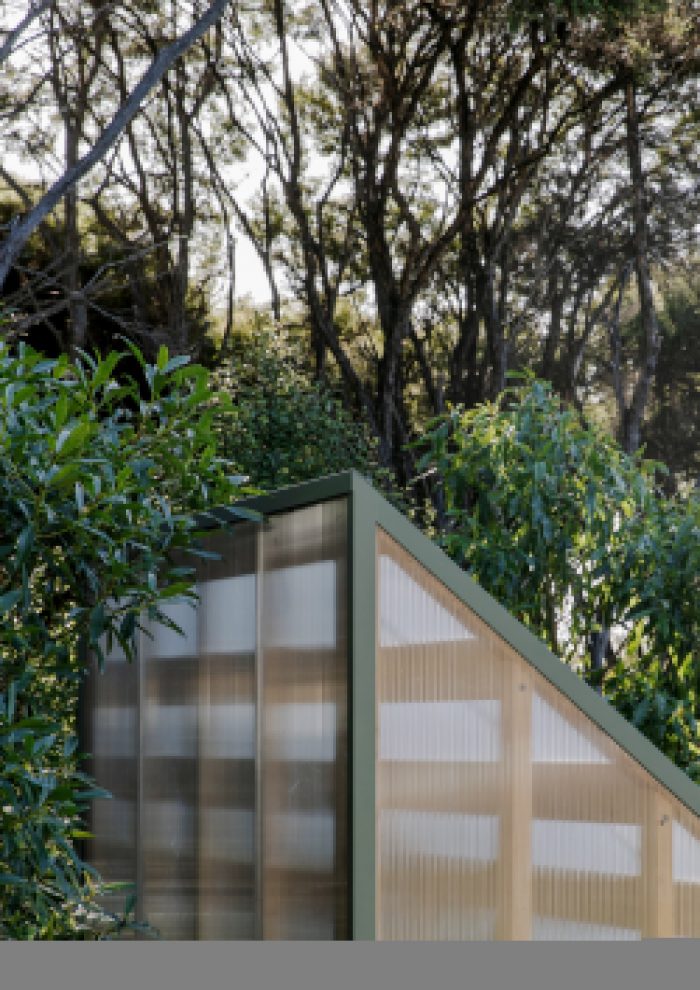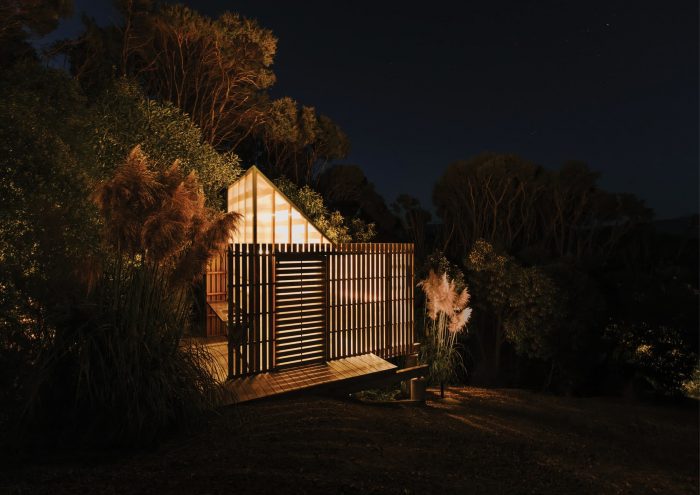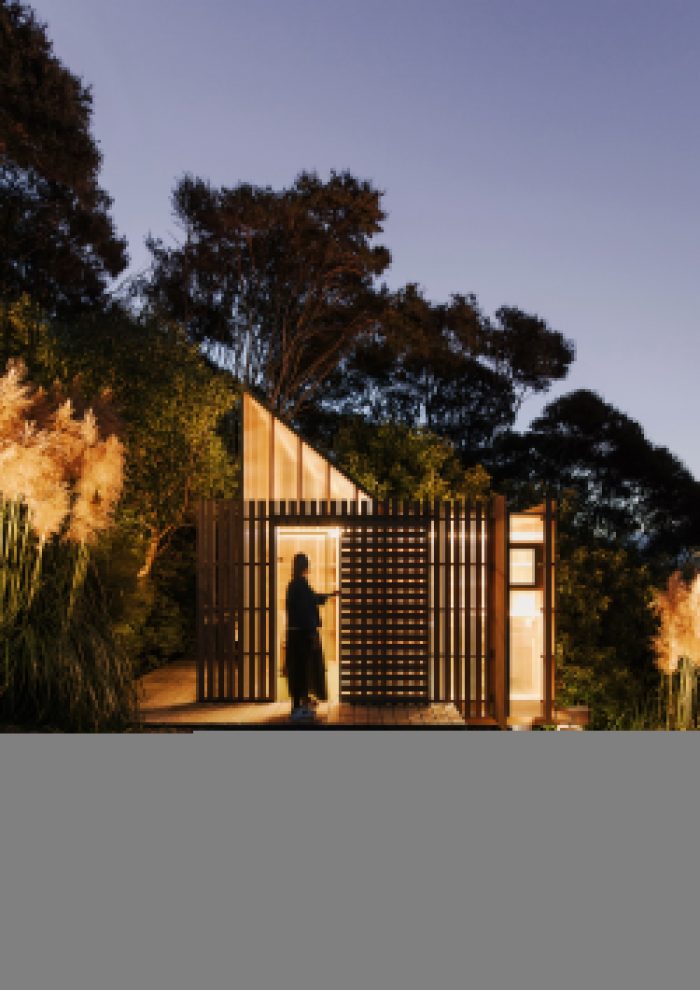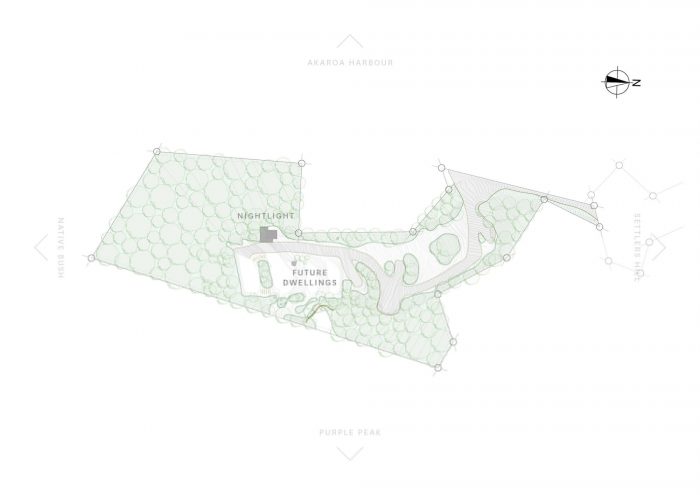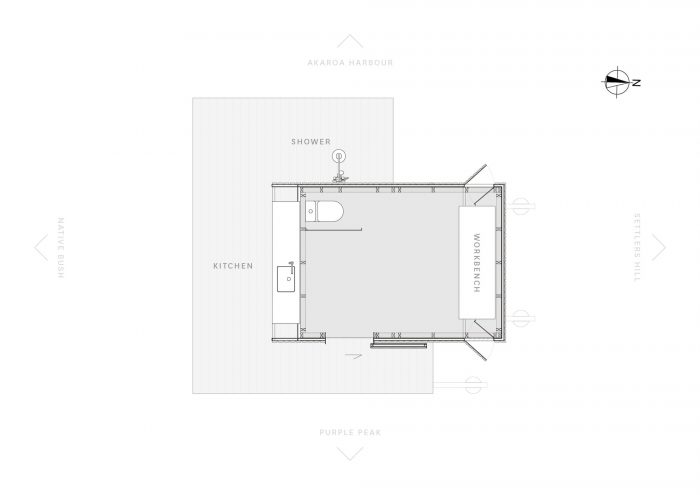夜光填补了环绕新西兰班克斯半岛阿卡鲁阿镇的卡努卡带的一个历史性空隙。实际上,这个建筑是为业主的长期愿景提供生活服务和工具储存,以使土地再生并建造他们的永久家园。一旦这个家建成,这个临时的家需要融入并加强其周围的环境,而不是减损它们。
Nightlight fills a small gap in a historic clearing of the kānuka belt wrapping around the Akaroa township in Banks Peninsula, New Zealand. Practically this building was to provide services for living and tool storage for the owner’s long-term vision to regenerate the land and build their forever home. Once that home is complete, this temporary home needs to slot into and enhance its surroundings, rather than detract from them.
我们的回应是一个笼罩在木材格子里的结构,模仿它所在的卡努卡树线的周围树干。夜光 “没有像典型的棚屋那样被置于人们的视线之外,或仅用于其服务,而是被重新设计为一个灯光雕塑,从未来的户外生活空间可以自豪地看到。晚上看到的过滤光线在板条之间发光,与白天看到的极简主义外墙形成鲜明的美学对比。它所提供的光线对一个黑暗的场地来说是一个受欢迎的补充。
The response is a structure enveloped in a lattice of timber that mimics the surrounding trunks of the kānuka treeline it is positioned in. Rather than locating this building out of sight like a typical shed or using it only for its services, Nightlight has been reimagined as a light sculpture that will proudly be seen from the future outdoor living space. The filtered light seen glowing between the slats at night is a contrasting aesthetic to the minimalist facade seen throughout the day. The light it provides is a welcome addition to an otherwise dark site.
从业主所喜爱的基督城风格建筑的日本影响中得到启发,材料的连接和固定被自豪地表达和暴露出来,而它对Shoji的解释提供了与周围灌木丛的持续联系,并在内部需要时提供隐私。夜光 “闪闪发光,由于它的聚碳酸酯外壳而具有这种联系,选择它也是因为它能够很容易地被运到现场并使用手工工具工作。选择LVL松木是因为它的刚度和直线度,可以使用较少的木材构件,因此有更好的透光性。所有的格子和板条都被仔细地与内部结构对齐,并且少用,以便在夜间有一个统一的发光模式。在整个建造过程中,这种关键的几何形状和排列是一个持续的挑战。
Taking cues from the Japanese influence on Christchurch style architecture that the owners love, material junctions and fixings are proudly expressed and exposed, while its interpretation of a shoji provides a constant connection to the surrounding bush and privacy where required when inside. Nightlight shines bright and has this connection thanks to its polycarbonate shell, also chosen for its ability to be easily transported to the site and worked with hand tools. LVL pine was selected for its stiffness and straightness to allow for fewer timber members to be used and therefore better light transmission. All battens and slats were carefully lined up with the internal structure and used sparingly to allow a uniform pattern of glow at night. This critical geometry and alignment was a constant challenge throughout the build.
这座建筑由建筑师/业主建造,许多部件都是从头开始制作的–可操作的屏幕、表面滑块、窗户和屏幕墙,手工搅拌和浇筑的混凝土桩基和热水浴缸,以及为这个雄心勃勃的项目的其余部分准备的工具架。
Built by the architect/owners, this building has many components crafted from scratch – the operable screens, surface slider, windows and screen wall, the hand-mixed and poured concrete pile footings and hot tub, and the racks that keep their tools at the ready for the rest of this ambitious project.
在可能的情况下,木材是最受欢迎的,以确保建筑的净负体现碳和低维护。甲板采用当地采购的macrocarpa,板条采用热改性松木,模仿卡努卡的树干,与此相反,内部的LVL框架采用温暖的色调,以欢迎用户。雾绿色的加入创造了一个简单的调色板,舒适地融入环境。
Timber was favored wherever possible to ensure the building was net negative embodied carbon and low maintenance. Both the locally sourced macrocarpa for the decking and thermally modified pine for the slats have been left to silver off mimicking the kānuka trunks and, in contrast, the internal LVL framing is warm in tone to welcome users. The addition of mist green creates a simple palette that slots comfortably into the environment.
Architects: Fabric
Area : 10 m²
Year : 2022
Photographs :Nancy Zhou
Manufacturers : Abodo, Alsynite, Carter Holt Harvey, Ulrich Aluminium Cladding
Design : Mitchell Coll, Amy Douglas
City : Akaroa
Country : New Zealand

